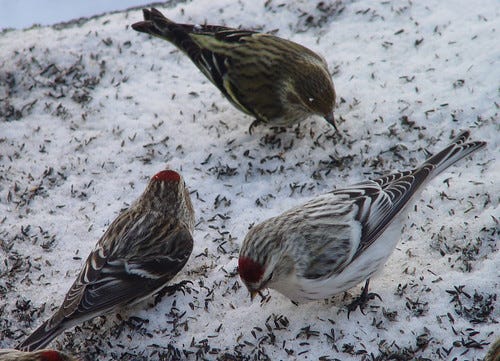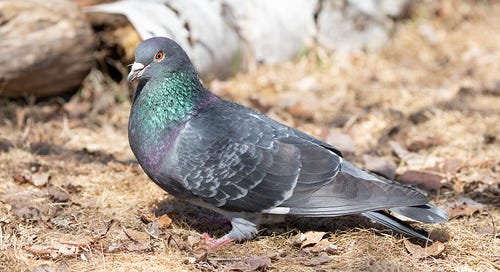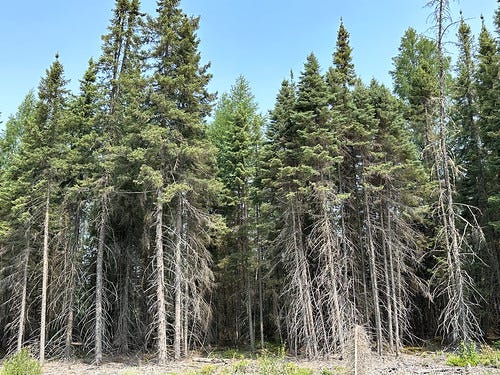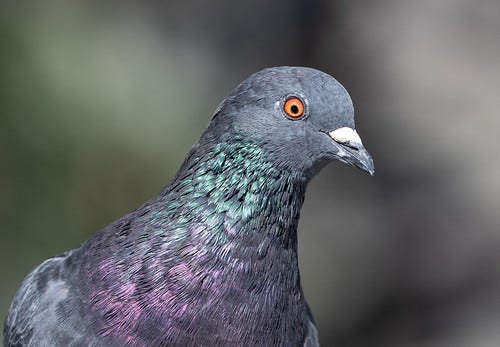(Listen to the radio version here.)
One of the lovely chapters of Aldo Leopold’s A Sand County Almanac is titled “January Thaw.” It begins: “Each year, after the midwinter blizzards, there comes a night of thaw when the tinkle of dripping water is heard in the land.”
January thaws can be oh, so welcome when winter lives up to its name. This winter Duluth has had some cold weather and snow, but right now this on track to be one of the warmest winters on record with one of the smallest snowfall totals. On warmer days, there are no tinkles of dripping water in my neighborhood because there are no icicles or snow-covered branches and rooftops to drip.
Last winter was also mild as far as temperatures go, but nowhere near as warm as this winter so far. And last winter we broke our all-time record of seasonal snowfall with 140.1 inches. This year? So far we’ve had just about exactly one-tenth of last year’s total, barely 14 inches, and most of that is gone now; the ground in my backyard is mostly bare. In January, we did have a 9-day spell of below-zero nights, but on only two of those days did the temperature stay below zero all day, and then just barely. Between lack of snow and such above average temperatures, Duluth’s annual John Beargrease Sled Dog Race was cancelled. Cable, Wisconsin’s American Birkebeiner, North America’s largest cross-country ski marathon, is still scheduled for February 24, but unless the forecast changes dramatically, the Birkie will almost certainly have to be cancelled, too.
(In the above video, made in January 2018, Russ tosses a cup of boiling water into the frigid air to turn it instantly into snow. The temperature was below –10ºF. This winter we didn’t have a single day when we could have done that!)
Yesterday, February 5, the temperature hit 50º at the Duluth International Airport. Warm spells happen just about every year, as Leopold wrote. But you can’t call this a warm spell when it’s been so warm all winter. It feels like April in my backyard, with nights in the 20s and 30s, and days in the 30s and 40s, but without snow on the ground, it sure doesn’t look like April.
It can be a welcome reprieve to not have to deal with extreme cold and snow shoveling, but this kind of winter exacts heavy penalties, too, and not just regarding winter sports. Not too far south of us, in Madison, Wisconsin, people are already dealing with ticks. Historically, our typical spells of below-zero temperatures, with multiple nights dropping to 20 below or more, can reduce the numbers of ticks and some plant pests such as emerald ash borers. This year, we can probably expect higher numbers of those pests and even more ash trees succumbing.
Normal winters are important for the plants so many of our northern birds depend on, such as birches, black spruces, and tamaracks. The mild winters, increasingly hot summers, and droughts all associated with climate change are hastening the northward progression of more southern hardwoods. I do enjoy the cardinals and Red-bellied Woodpeckers I see in my own yard just about every day now, but they come at a cost.
In my 2006 book, 101 Ways to Help Birds, #41 is “Understand the pros and cons of bird feeding,” and #42 is “Take precautions to keep your feeders safe from toxins and diseases.” I discuss the importance of keeping the ground beneath feeders raked as snows melt in late winter. During most of our northern winters, intermittent snowfalls cover accumulating bird droppings and spilled seeds and shells under our feeders, and cold temperatures slow their decomposition. But with warm temperatures exacerbated by rain and melting snow, the bacteria and fungi involved in breaking vegetal matter down may cause botulism and salmonella. Also, fungal molds produce dangerous aflatoxins. And wherever birds gather on the ground, their accumulating droppings can also spread disease. So with the first serious snowmelts, raking up under our feeders becomes critical. In past decades, we hardly ever had to think about that until March or, more typically, April, but this winter, keeping the ground clean beneath our feeders is already important, especially where winter finches are gathering.

In my own yard this season, most birds have been few and far between, pigeons and starlings being the exceptions. During our first couple of decades in Duluth, starting in 1981, I never saw pigeons in my neighborhood and starlings were uncommon. I usually added both species to my year list each January when we drove through downtown Duluth and over the High Bridge on our way to visit Russ’s parents.
It’s only been in the past few years that both species have become Peabody Street regulars, but now two dozen or more of each species may descend on my yard at the same time. When I notice them while I’m working at my desk or near a downstairs window, I open the window and wave my arm to shoo them off, but this winter my vigilance has suffered thanks to my mastectomy and, in the past few weeks, some severe dizzy spells. I think those are finally under control again, but as BF Skinner discovered with his pigeon studies, irregular rewards make pigeons even more determined than steady rewards. If I ignore mine for just a few hours, they empty my feeders entirely.
Winter finches—the birds most vulnerable to diseases from gathering beneath feeders—haven’t spent much time here this season. A handful of Pine Siskins, goldfinches, or House Finches show up every few days, but most days I don’t see any of them. I’m trying to be proactive about disease organisms developing under my feeders, but this year’s pigeons are making it hard to keep up. I sure hope that this, the winter of my discontent, is not nearly as hard on my birds, including those pesky pigeons, as it’s been on me.







